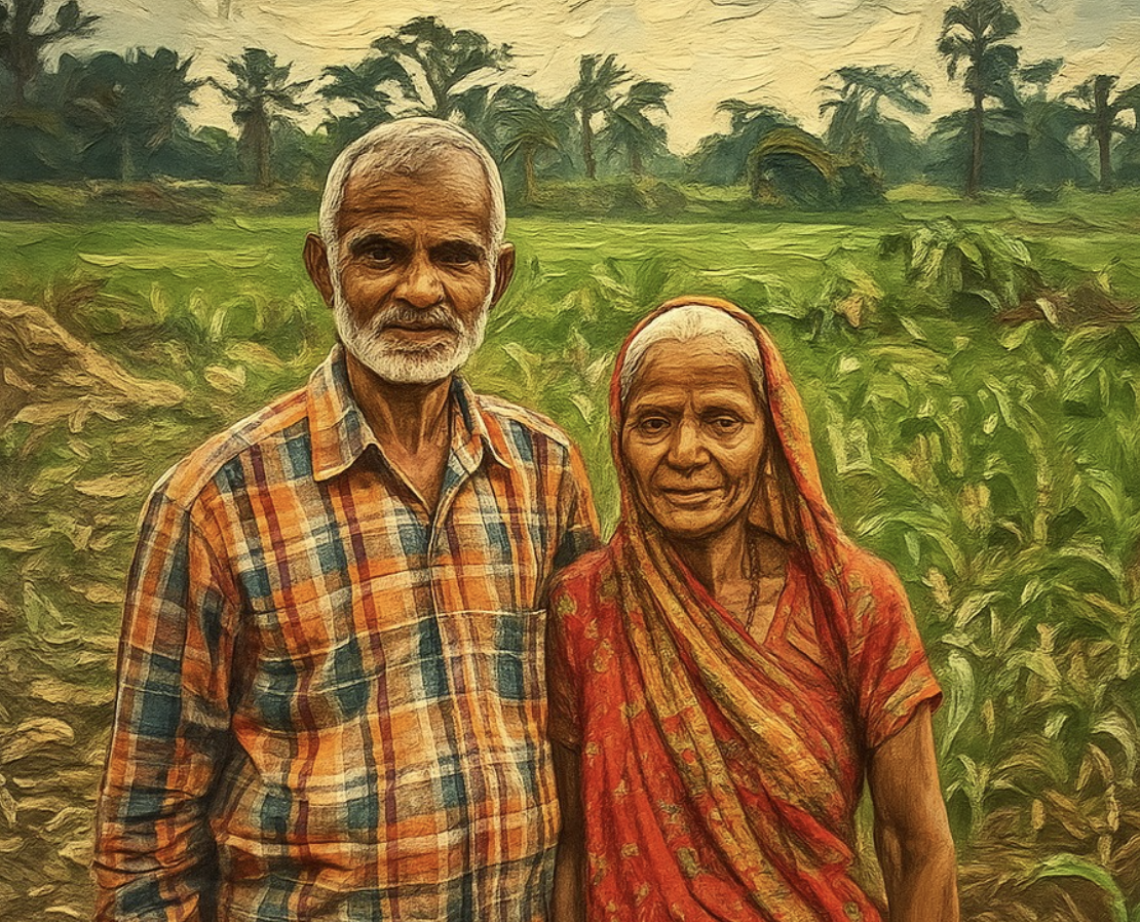Make your 2X MATCHED gift today!
This week only: Every $1 will be matched with $2 to enable women worldwide.
This week only: Every $1 will be matched with $2 to enable women worldwide.
Posted on 11/13/2025

Over 12 months, we interviewed 30 couples to better understand the challenges facing smallholder farmers today. This is the fourth in a series of blogs based on those interviews. Names and faces have been changed to protect privacy. Photo has been AI generated.
Saanvi is a 65-year-old scheduled caste day laborer who has never been to school, never learned to read and write, and now spends most of her days in bed with a fractured leg. Her husband, Aarav (70), also illiterate, cares for her while he works whatever jobs he can find as a hired farm laborer. “I spend two hours with her,” he explains, “then I go farming and then come back. I have to stop my work to take care of her.” Aarav insists that although it is taxing on him, he does not let their children leave school to care for their mother. “I take care of her with my own hands,” he says with pride.
Generating enough income to live is a constant struggle for the couple. “We are poor so we have no option but to control our expenses.” Saanvi says. “We are all engaged in the daily wage work.” Her frustration in not being able to contribute right now is evident; “Myself, my grandfather and my sons all do this, but right now I am not doing anything,” she sighs. When she was able, Saanvi used to work in the fields with her husband. “Being a woman I have to first take care of my household chores, then take care of my family and children, and then only I can do the field work. This is most challenging,” she explains. “Also, being a woman I cannot work as a man but I do manage to do it.”
Without insurance and with Saanvi being unable to work, the couple’s financial situation is increasingly tenuous. “We don’t have money for a bank balance,” Aarav says, explaining that he borrows from relatives and friends to cover expenses. Saanvi is not optimistic about their financial future. When asked if she feels hopeful, Saanvi answers without hesitation: “No.” Her husband, only slightly more optimistic, says he feels “somewhat hopeful” for the future. They both agree that with no savings, it would be “not at all possible” to find 5,000 rupees (about 2 weeks wages) in case of an emergency.
Saanvi feels strongly that financial stability is the key to a family’s resiliency. “With a poor family it is very difficult for them to bounce back, while if the family is rich then they can easily deal with such situations,” she says. Aarav knows that the only way for them to make ends meet is to take whatever work comes their way, even in blistering heat. “We don’t see this heat when we are getting the money,” he says, “We only take the money. If we don’t do it then how will we live? What will we eat?”
For Saanvi, having never been educated or trained in another profession, day labor farming is the only way she knows to earn an income, but she believes that education is the key to her children’s success. “Farming is very important but we have to educate our kids,” she says, repeating emphatically, “We have to educate our kids! It is not possible (to be financially stable) through farming. So we will have to do labor work, and then only we will be able to support our family and educate our kids.”